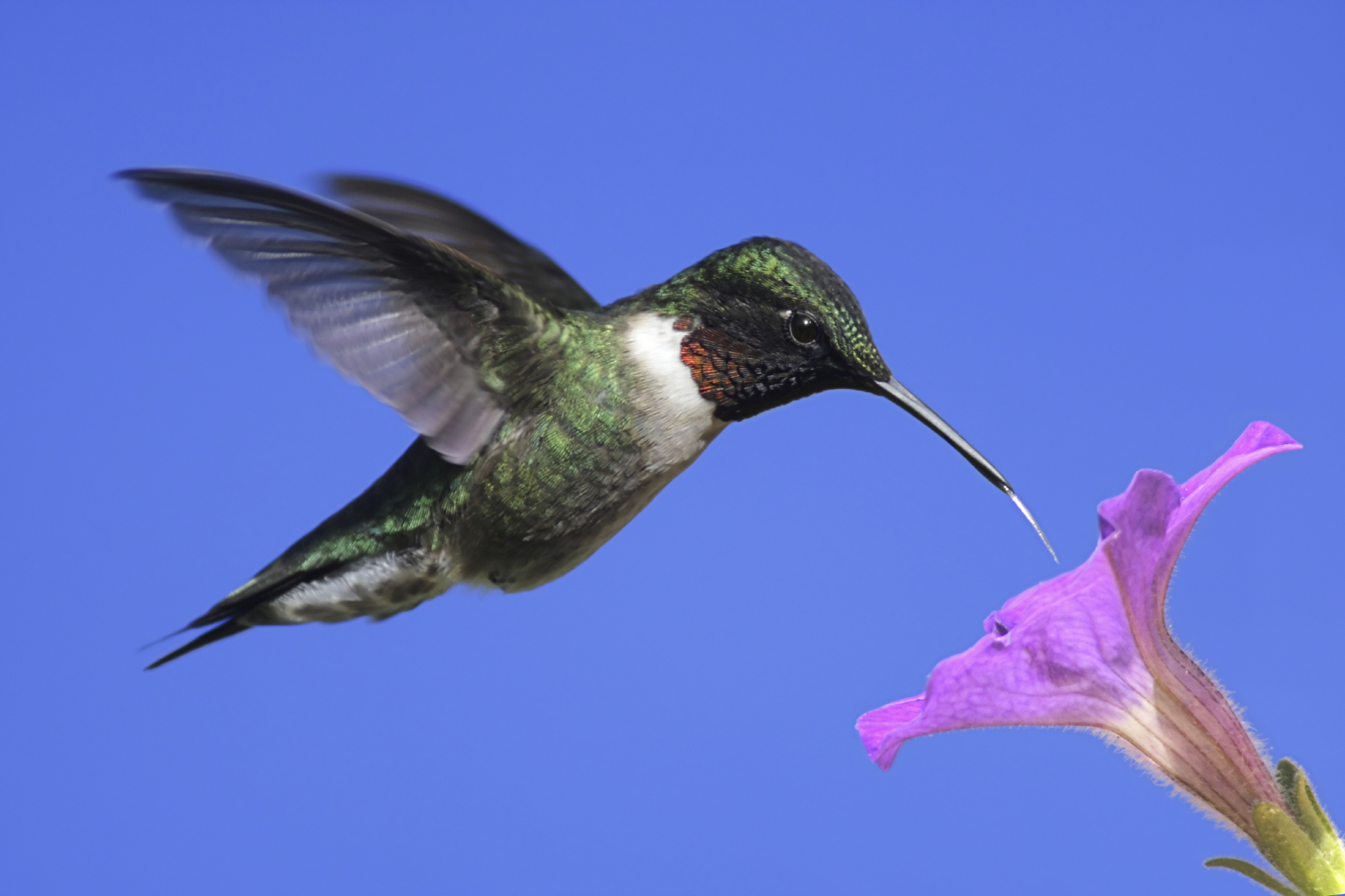Archilochus colubris
Aviation experts have nothing on these guys! How about wings that beat fifty-three times PER SECOND? No wonder that can fly forward, backward, and hover! Consider this: an adult, male Ruby-throated Hummingbirds weighs less than a nickel, yet flies non-stop across the Gulf of Mexico twice each year. Navigation skills? Hummers demonstrate “site fidelity,” returning to the same breeding area each season.
Our only eastern hummingbird species, the Ruby-throated Hummingbird breeds from the Gulf Coast north into Canada. Their winter range includes portions of Mexico and Central America. The sequence of migration begins with the males, followed by females, and finally (in the fall) juveniles. Spring movement north begins along the Gulf Coast in late February and concludes by mid-May in Canada. Northernmost birds are heading south by late August and most hummers have left the United States by late September.
Males and females are similarly patterned metallic bronze-green on their heads and back and dull white below. Males sport a black chin and a bright metallic red throat. The throat color, being a refracted color, changes to dark green in side light. This chin and throat pattern is absent in females.
The high metabolism of the Ruby-throated Hummingbird is satisfied by consumption of flower nectar. This makes our hummers important pollinators of many native flower species. The rest of their diet is composed of mosquitoes, spiders, gnats and other tiny insects.
The high demand for nectar means they can be attracted to sugar water placed in hummingbird feeders. Red plastic feeder parts will attract the birds. It is not necessary to add color to the water. Do not use food coloring or honey! A solution of one part sugar to four parts water provides the right ratio. It is important to change the solution regularly (at least weekly), especially in hot weather (every two days). Placing the feeder in shade will help keep the solution
Ruby-throated Hummingbirds
Ruby-throated Hummingbirds
fresh longer.
There are a plethora of feeder styles available, one for every taste. A classic feeder, The Hummzinger (pictured here), is a perennial favorite. It cleans and fills easily and provides comfort for the bird and good views for the hosts.
Reference
Robinson, T. R., R. R. Sargent and M. B. Sargent. 1996. Ruby-throated Hummingbird (Archilochus colubris), The Birds of North America Online (A. Poole, Ed.). Ithaca: Cornell Lab of Ornithology.

